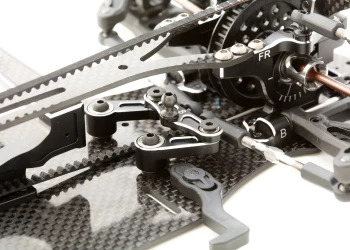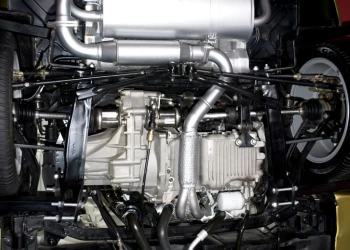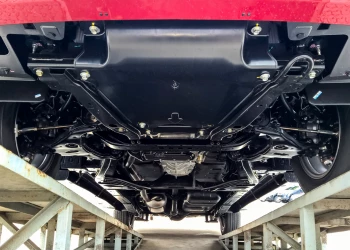Electric power steering increases driver comfort
Add bookmarkElectric Power Steering (EPS) has come a long way from the early days when manufacturers fitted the system, primarily to overcome the parasitic losses associated with hydraulic power assistance. With the proliferation of Advanced Driver Assist Systems, OEMs are now able to add features which not only enhance performance but also significantly improve driver comfort.
Early EPS was often criticized for a lack of driver feel and feedback, but by monitoring the driver‘s steering inputs, vehicle speed, and other suspension dynamics, modern EPS systems provide just the right amount of steering feel and effort to match rapidly changing driving conditions – even with engine-off, some models still retain a degree of power assist.
With speed sensitive power assistance, the amount of steering assist provided at low speed during tight parking maneuvers must be reduced at higher speeds to prevent the driver “over steering” the vehicle. Modern systems have progressed to the point where this comfort feature is so seamless that it’s often overlooked.
Improved driver feel and feedback without losing the slow speed power assistance
A good example of how far EPS has progressed in this area is to be found on the 2017 Honda CR-V where the EPS incorporates dual pinion gears and a variable gear ratio for enhanced lowspeed maneuverability without sacrificing high-speed stability.
Compared to a traditional single-pinion steering system, the dual pinion EPS utilizes the physical steering input from the driver as well as from a supplementary electric motor. A non-contact torque sensor measures the driver’s steering effort and an ECU determines how much electric motor assist to add, with the result claimed to produce a seamless, naturalfeeling steering in all situations.
The steering ratio is variable over a 20-percent range with a final full off-center ratio of 12.3:1. This provides 2.3 turns lock-to-lock – significantly quicker than the 2016 CR-V’s 3.1 turns – enabling easier low-speed maneuvering and parking.
The variable ratio allows for slower gearing around the straight-ahead position for improved stability at high speeds. Also contributing to the enhanced steering performance and feel of the CR-V are reduced operating friction, a high level of stiffness for the steering mount, and a larger diameter, more rigid steering column shaft (8 mm larger than the 2016 CR-V).
However, for a driver to feel comfortable and in control of the vehicle it’s important that the steering remains predictable under all conditions.
[inlinead]
Wishing to optimize the EPS for all road types a group of Hyundai engineers recently published their findings on using inputs from existing sensors to modify the steering outputs to suite different road surfaces and driving conditions.
EPS systems usually run off a single steering map compiled and refined with the help of highly experienced test drivers. Once the map has been defined it’s not possible to modify the systems behavior to cope with extreme road conditions such as varying levels of grip or even unpaved road surfaces. It would also be helpful to have the system respond to unique driving conditions such as experienced under emergency braking.
The team developed an adaptable system using existing vehicle sensors such as wheel speed/vehicle speed/steering angle/steering torque/steering speed to detect changing road conditions. Using these inputs to identify the driving conditions a unique map is selected that that gives the driver predictable feedback while offering the optimal level of power assistance.
These findings, published in a SAE International report in January 2017, could be particularly relevant as manufacturers explore the full potential of ADAS features, with EPS pivotal in enabling systems such as side-wind compensation, lane assist/keeping and parking assist.
EPS takes control so that the driver can relax
With traditional steering systems the driver has to continually make minor steering corrections to compensate for irregularities, such as road camber or crosswinds, that unsettle and unintentionally change the direction the vehicle is travelling in.
Modern EPS systems automatically assist the driver when encountering continuous side wind or severe camber. If the EPS control unit registers that the driver is continuously countersteering, the power-assisted steering adjusts itself automatically to compensate for the correction. The fact that the driver no longer has to actively countersteer makes for less stress and easier driving.
EPS can also help steer tomorrow‘s self-driving cars. By their very nature, autonomous or even semi-autonomous vehicles will need to have all major systems electronically controlled in order to give the proper commands to get the vehicle safely from point A to B.
EPS therefore opens the door for a number of additional features that can be added via the steering system. Parallel park is one such feature and there are several others including lane keeping assistance, lane guidance, and vehicle stability that all rely on EPS to enhance the quality and comfort of the drive experience.
Over and above the comfort and convenience offered by EPS these systems also offer a significant reduction in NVH over previous hydraulic power-assisted systems. This is particularly important in hybrid and electric vehicles operating in full electric mode, which demand increasingly lower noise levels.
Reducing noise levels for quieter cabins
The noise emitted by the EPS is largely dependent on the systems’ configuration:
- Column-assist: The electric motor is mounted on the steering column. The advantage of this is that, because it’s not mounted in the engine compartment, it’s not exposed to water and heat. However, noise (often as a result of “cogging torque” in the permanent magnet motor) can be a problem as it’s in close proximity to the driver.
- Pinion-assist: The electric motor is mounted where the pinion gear of the rack and pinion steering system connects to the rack. This system has better Noise Vibration and Harshness characteristics than the column mounted motor.
- Rack-assist: The electric motor is mounted on the rack. An advantage of this system is that the motor can be mounted anywhere on the rack, thereby simplifying packaging and fitment. NVH of this configuration is similar to that of the Pinion-Assist.
Pinion- and Rack-assist systems are capable of achieving noise levels in the region of 35 decibels (dB), which is quieter than a typical library at 40 dB.
Whilst comfort is highly subjective, there’s no doubt that EPS will continue to evolve together with ADAS, self-driving and electrified vehicles. As costs reduce we can expect to see EPS even being fitted to price-sensitive small segment A vehicles.






















